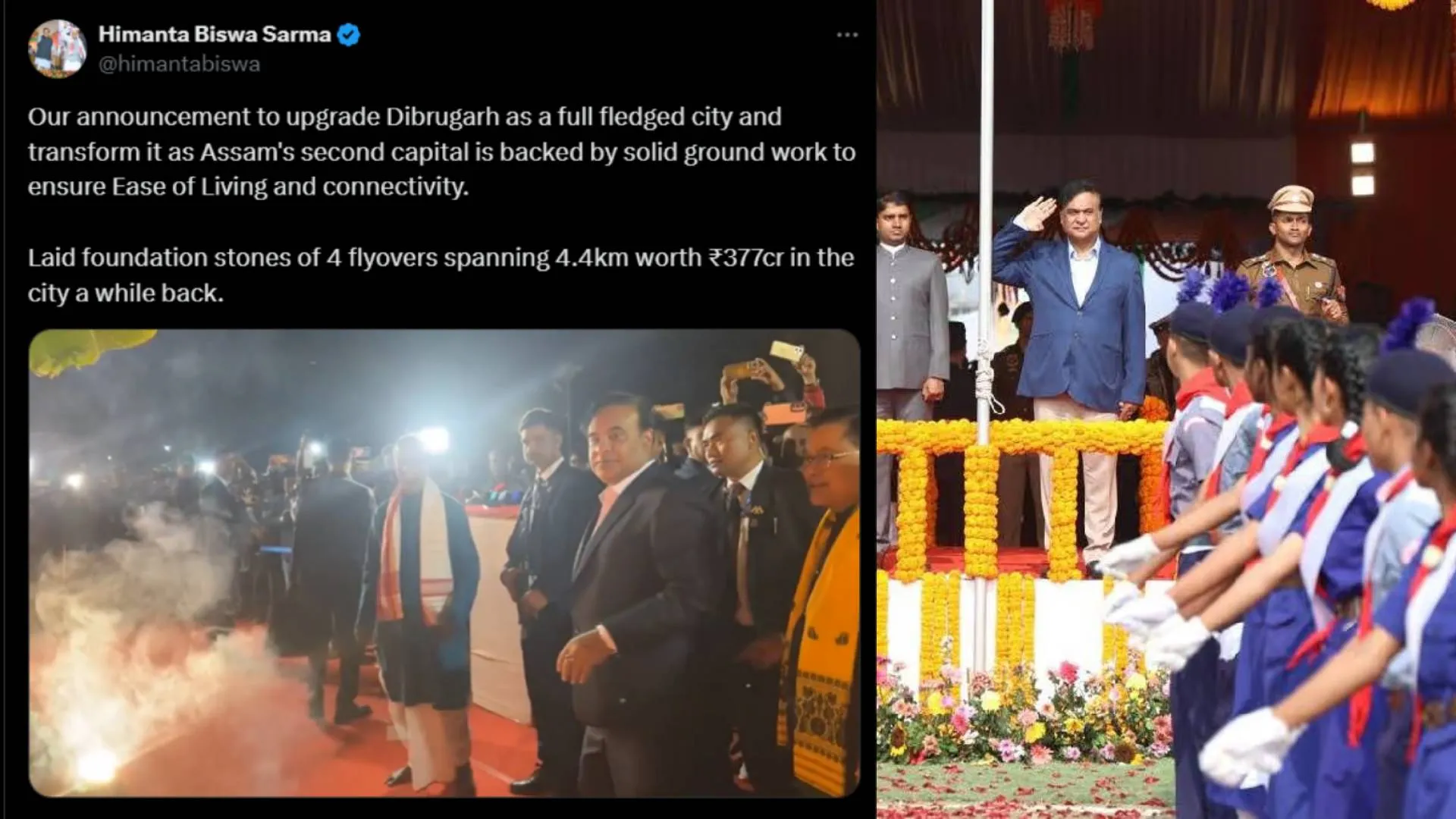I. INTRODUCTION
The genesis of arbitration being chosen as the preferred mode of dispute resolution mechanism lies on the premise of mutual consent given by the parties under the agreement or contract, as the case may be. The same underlying principle is also surmised by Section 7 of the Arbitration and Conciliation 1996 (“A&C Act 1996”).
A significant change in the interpretation of Section 7 of the A&C Act 1996 evolved with the courts in India enlarging the scope by taking into consideration the intention of the parties, role of parties and its affiliates as per the Group of Companies doctrine etc. The Group of Companies doctrine aims to encompass, under certain conditions, the arbitration agreement signed only by one or some of the companies of a group to the non-signatory companies of the same group. This doctrine is inherently linked to piercing or lifting the corporate veil doctrine. By way of this article, we aim to understand the Group of Companies doctrine and its evolution by the Indian courts.
II. GROUP OF COMPANIES DOCTRINE
The doctrine of “Group of Companies” had its origins in the 1970s from French arbitration practice. The Group of Companies doctrine indicates the implied consent to an agreement to arbitrate, in the context of modern multi-party business transactions.
The Group of Companies doctrine was first invoked in 1984 by the International Chamber of Commerce Tribunal in the matter of Dow Chemical v. Isover Saint Gobain, 1984 Rev Arb 137: (1983) 110 JDI 899 wherein the Court duly held that in accordance with the common intention of all the companies involved, Dow Chemical France and Dow Chemical Company (USA) were found to be parties to the arbitration agreements although they did not actually sign them. The arbitration clause was applicable to them as well due to the common intention. It is pertinent to note herein that the Court duly held that arbitration clauses were applicable to Dow Chemical Company (USA) as they effectively and individually participated in the contract’s conclusion, their performance, and their termination.
Though the scope of an arbitration agreement is limited to the parties who entered into it and those claiming under or through them, the courts under the English law have, in certain cases, also applied the Group of Companies doctrine. This doctrine has developed in the international context, whereby an arbitration agreement entered into by a company, being one within a group of companies, can bind its non-signatory affiliates or sister or parent concerns, if the circumstances demonstrate that the mutual intention of all the parties was to bind both the signatories and the non-signatory affiliates. This theory has been applied in a number of arbitrations so as to justify a tribunal taking jurisdiction over a party who is not a signatory to the contract containing the arbitration agreement.
The focus point while applying Group of Companies doctrine comes into play in the form of extending arbitration proceedings to a non-signatory to the arbitration agreement which is beyond the rigours of Section 7 of the A&C Act 1996. A valid arbitration agreement is the essential element and the basis of the arbitration proceedings. As a consequence of the same, generally under normal circumstances, only those parties who have signed and are a part of the arbitration agreement may take part in the arbitration proceedings and would be bound by the relevant award passed by the arbitral tribunal. The difficulty arises where the arbitration agreement is sought to be extended to a non-signatory to the arbitration agreement based on the mutual intention of such non-signatory to be bound by such agreement.
The real inference of the Group of Companies doctrine in the present commercial world is considerable, given the swelling complexity of commercial contracts. For example, it is rather usual to see multiple entities within a group company be involved in the negotiation, performance, or termination of a contract, even if they have not signed the said contract. The entity that formally signs and executes an agreement may also not essentially be the entity that performs it for various business organizational reasons. The performance of an agreement by a subsidiary may be funded by the holding and/ or parent company, or funds may flow between group companies to facilitate performance under the agreement. In these circumstances, and especially in relation to such complex commercial transactions where such entities may have formulated their deals to limit or separate liability among various group members, the Group of Companies doctrine may provide a legal basis for non-signatories to be compelled to arbitrate.
The interesting bit about the Group of Companies doctrine is lifting of or piercing the corporate veil of a company to identify where the true control of the company lies and to ascertain whether the arbitration agreement was intended to bind both the signatory and non-signatory affiliates. The parties’ intentions are typically ascertained through their conduct, which includes a consideration of whether the non-signatory participated in the negotiation, performance, or termination of the contract.
III. INDIAN COURT AND THE EVOLUTION OF GROUP OF COMPANIES DOCTRINE
The Doctrine took its time to be recognized in the Indian Jurisprudence. In the early 2000s, Indians courts have taken an orthodox view. For instance, in the case of Pramod C Patel v. Lalit Constructions and Anr, 2002 SCC OnLine Bom 546, the High Court of Bombay explicitly noted that the arbitration agreement needs to be signed by both the parties. Later, even the High Court of Delhi in K.K. Modi Investment and Financial Services Pvt. Ltd v. Apollo International Inc. & Ors, 2009 SCC OnLine Del 1595 reiterated that there should be a contract between the parties and if there is no contract between petitioner and respondent, the arbitration clause between them cannot be inferred.
The same view was taken by the Hon’ble Supreme Court in 2010 in the matter of Indowind Energy Limited v. Wescare (I) Limited and Another, (2010) 5 SCC 306. The Hon’ble Supreme Court held that it is fundamental that a provision for arbitration to constitute an arbitration agreement for the purpose of Section 7 should satisfy two conditions: (i) it should be between the parties to the dispute; and (ii) it should relate to or be applicable to the dispute. Further, each company being separate and distinct legal entity and the mere fact that the two Companies have common shareholders or common Board of Directors, will not make the two Companies a single entity or lead to an inference that one company will be bound by the acts of the other.
Eventually, it was in the year 2012, when the Apex Court for the first time adopted the Group of Companies doctrine in the matter of Chloro Controls (I) P. Ltd. v. Severn Trent Water Purification Inc. & Ors, (2013) 1 SCC 641 wherein the Court held that a non-signatory forming part of the same corporate group as a signatory could be made a party to the arbitration, where it is clear from circumstances surrounding the transaction that the ‘mutually held intent’ was to bind the signatory as well as the non-signatory to the arbitration agreement. The doctrine could be applied to join non-signatories based on: (i) direct relationship between the signatories and the non-signatories; (ii) direct commonality of the subject matter; (iii) the composite nature of the transaction between the parties; and (iv) whether the ends of justice would be served by referring the disputes to arbitration. Pertinently, the Court’s concluding remark on the doctrine was “An arbitration agreement entered into by a company within a group of companies can bind its non-signatory affiliates, if the circumstances demonstrate that the mutual intention of the parties was to bind both the signatory as well as the non-signatory parties”. After the passing of the judgment in 2013 by the Apex Court and the recognition of Group of Companies doctrine in the Indian diaspora, the doctrine has been widely applied in numerous cases and its scope has been diluted or enlarged on a case of case basis.
In the case of Cheran Properties Limited v. Kasturi and Sons Limited and Others, (2018) 16 SCC 413, the Hon’ble Court held that the doctrine is intended to facilitate the fulfilment of a mutually held intent between the parties, of arbitrating disputes involving signatory and non-signatory parties. The effort is to find the true essence of the business arrangement and to unravel from the commercial and business arrangement the real intent of the parties whether to bind a non-signatory to an arbitration clause or not. Even, in Ameet Lalchand Shah and Ors. v. Rishabh Enterprises and Anr., (2018) 15 SCC 678, the Hon’ble Supreme Court applied the doctrine to join non-signatories as parties in a composite transaction even though the participants in the transaction were not part of the same corporate group. The emphasis was on the interlinked agreements for a single commercial project.
In the matter of MTNL V. Canara Bank and Others, (2020) 12 SCC 767 the apex Court reiterated that conduct of parties evidencing a clear intention of the parties to bind both the signatories and non-signatories or where there is tight group structure with strong organisational and financial links, so as to constitute a single economic unit, or a single economic reality are pre-conditions for invoking the Doctrine. Further, in the matter of Reckitt Benckiser (India) Private Limited v. Reynders Label Printing India Private Limited and Another, (2019) 7 SCC 62 the Supreme Court reiterated the above by stating that mutual intention to bind the parties through their conduct is paramount for invoking the said Doctrine.
Recently, a three-judge bench of the Apex Court in the matter of Oil and Natural Gas Corporation Limited V. M/s Discovery Enterprises Private Limited and Anr, Civil Appeal No. 2042 of 2022 (Judgment dated 27 April 2022) set aside an interim award under Section 16 of the A&C Act 1996 deleting a party from the array of the parties as the Arbitral Tribunal failed to determine the legal foundation for the application of the Group of Companies doctrine. As per the apex Court, the Arbitral Tribunal erred by deferring an application for discovery and inspection after determining its jurisdiction in the application under Section 16 of the A&C Act which deprived the party a chance to establish Group of Companies doctrine by leading evidence which may come to light vide the said discovery and inspection application. Interestingly, when the interim award by the Arbitral Tribunal was passed, the Group of Companies Doctrine had not landed its foot in India, but the Apex Court observed that the foundation for the same had been laid down. In its judgment, the Hon’ble Supreme Court enlarged the scope of the doctrine under section 7 by stating that the following factors may be considered when deciding whether a non-signatory company within a group of companies would be bound by the arbitration agreement:
“i) The mutual intent of the parties;
(ii) The relationship of a non-signatory to a party which is a signatory to the agreement;
(iii) The commonality of the subject matter;
iv) The composite nature of the transaction; and
(v) The performance of the contract.”
The most recent judgment to join the queue is the matter of Cox and Kings Limited V. SAP India Private Limited & Anr., Arbitration Petition No. 38 of 2020 (Judgment dated 6 May 2022), wherein the Hon’ble Court examined whether the principles of party autonomy under arbitration law and corporate personality in company law have been adequately safeguarded in outlining the scope and applicability of the Group of Companies doctrine being followed at present in Indian jurisprudence. It was duly noted that Group of Companies doctrine is one such area which is utilized to bind third parties to an arbitration agreement. Theoretically, the policy consideration of efficiency is argued to allow such joinders. However, until a legal basis for the same is provided, efficiency cannot itself be the sole ground to bind a party to arbitration.
The Apex Court further noted that vide various precedents courts in India on one hand have reduced the threshold of arbitration being a consensual affair and on the other hand, the Group of Companies doctrine is transposed on requirements under contract law to bind a party to an arbitration. It was further noted that amendment to the A&C Act 1996 in 2015 has expanded Section 8 (1) to include persons claiming, “through or under”. But such change has not been carried out in Section 2 (1) (h) which has created an anomalous situation wherein potentially a party “claiming through or under” could be referred to an arbitration but would not have the right to seek relief under Section 9 of the A&C Act 1996.
Though the Group of Companies doctrine as expounded, requires the joining of non-signatories as ‘parties in their own right’. This joinder is not premised on non-signatories ‘claiming through or under’. Such a joinder has the effect of obliterating the commercial reality, and the benefits of keeping subsidiary companies distinct. Concepts like single economic entity are economic concepts difficult to be enforced as principles of law. Eventually and keeping in mind the evolution of the Doctrine, the Hon’ble Supreme Court deemed it appropriate to refer the following questions to larger bench for an authoritative determination:
A. Whether phrase ‘claiming through or under’ in Sections 8 and 11 could be interpreted to include ‘Group of Companies’ doctrine?
B. Whether the ‘Group of Companies’ doctrine as expounded by Chloro Control Case (supra) and subsequent judgments are valid in law?
C. Whether the Group of Companies doctrine should be read into Section 8 of the Act or whether it can exist in Indian jurisprudence independent of any statutory provision?
D. Whether the Group of Companies doctrine should continue to be invoked on the basis of the principle of ‘single economic reality’?
E. Whether the Group of Companies doctrine should be construed as a means of interpreting the implied consent or intent to arbitrate between the parties?
F. Whether the principles of alter ego and/or piercing the corporate veil can alone justify pressing the Group of Companies doctrine into operation even in the absence of implied consent?
IV. CONCLUSION
From the above analysis, it is clear the Group of Companies doctrine is set to undergo a major overhaul whenever the larger bench of the Supreme Court takes up the matter and decides the questions as noted above. Their interpretation and answers will either make the Group of Companies doctrine a part and parcel of arbitral law as prevalent in India or would simply render it useless which may be invoked only in very exceptional cases. As noted above, it is important to balance the basic ethos of arbitration i.e. consent of the parties to choose arbitration as their preferred mode of dispute resolution and at the same time make sure that a party may be able to enforce its right against such company which effectively was performing the obligations under the Agreement. It is also important to note that the relevant extant commercial laws of India provide a for separate corporate identity and therefore, any judgement that shall be rendered by the larger bench of Supreme Court will have a direct impact on the same. In view of the complex commercial transactions which is the norm in today’s commercial world, it is important to hold the right company responsible for any wrong but at the same time, it is also important to even out the issues that might be felt by a company which is forced to participate in an arbitration proceeding when it had nothing to do with the arbitration agreement and has been made a party just because it is a group or a holding or a subsidiary company. It may be an option for the parties to contracts governed by Indian law to specifically exclude the application of Group of Companies doctrine by noting in their contracts (including arbitration agreements) that (i) the benefits derived from the contract will be restricted to only the parties to the contract; and (ii) only the signatories and defined individuals/entities will be treated as parties.
The authors are advocates at Khaitan & Co. Ajay Bhargava (Partner), Aseem Chaturvedi (Partner), Trishala Trivedi (Principal Associate) and Milind Sharma (Senior Associate) are part of the Dispute Resolution Practice at Delhi.























